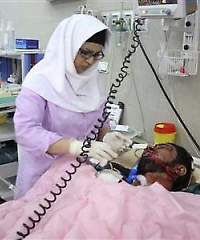The East Asian region led by Thailand and other countries such as Singapore, India and Malaysia is a dynamic and evolving destination for ‘medical tourists’, home to many of the most visible and well known hospitals currently serving medical tourists from across the world.
The remarkable success of established East Asian medical tourism providers in marketing their services to international patients has spurred interest among other countries in the region who aim to join these larger players. Medical tourism is a practice where patients travel abroad to purchase medically necessary services, such as heart surgeries and hip replacements; elective treatments, such as cosmetic surgeries or reproductive services; and experimental treatments, such as stem cell therapies.
The enthusiastic embrace of medical tourism by East Asian hospitals and governments is, in theory, well justified. Health services exports could potentially diversify regional economies.
Industry promoters say it can increase foreign direct investment into the private health sector, help countries retain their existing health workforce, increase training opportunities for health workers, and ensure that the local health sector has access to the latest technological advances.
Taken together, these benefits can provide local populations with the opportunity to access cutting-edge and high-quality health services at home.
But medical tourism also creates social and health risks for countries investing in the sector
Investment in medical tourism can drain resources from the public health sector and divert attention away from the less profitable health needs of the local population.
For example, high paying jobs in the medical tourism sector can increase the flow of workers from the public to private sector and from rural to urban areas, as has been the case in Thailand and Malaysia. New, high-tech equipment and highly trained health workers will certainly be a boon to wealthy patients within these countries. But there is little reason to think that these services, targeted at privileged locals and foreign patients, will be accessible or relevant to the vast majority of the local population.
Rather, medical tourism may actively worsen health inequities in these countries.
For example, increased investment in the private health sector in India has been accompanied with decreased public sector investment and promised public access to private facilities through public-private partnerships have generally not been realized. And the promised economic benefits of medical tourism are far from guaranteed. Growth in the sector has come through the lowering of trade barriers in the health services industry.
Large regional players in this industry have the power to play governments in the East Asian region off one another, seeking the regulatory and tax environments most favourable to their bottom lines.
This competitive environment is doubtlessly favourable to those investing in the medical tourism industry, but it is less clear whether the host countries will experience similar economic benefits if tax concessions and other benefits are not matched by economic returns or if medical tourism developments fail to materialise. Countries considering marketing their private health sector internationally should be cautious and aware that industry stakeholders have an incentive to inflate numbers about the market’s potential and exaggerate the potential benefits of this industry.
As East Asia already hosts some of the most developed and high-profile destinations for medical tourists, it is unclear if new markets in the region can successfully compete for the limited number of medical tourists, especially those from outside East Asia.
source: http://www.thailand-business-news.com / Thailand Business News / Home> Health/India/Malaysia / by Somchai Sakayathya / Tuesday – February 25th, 2014


